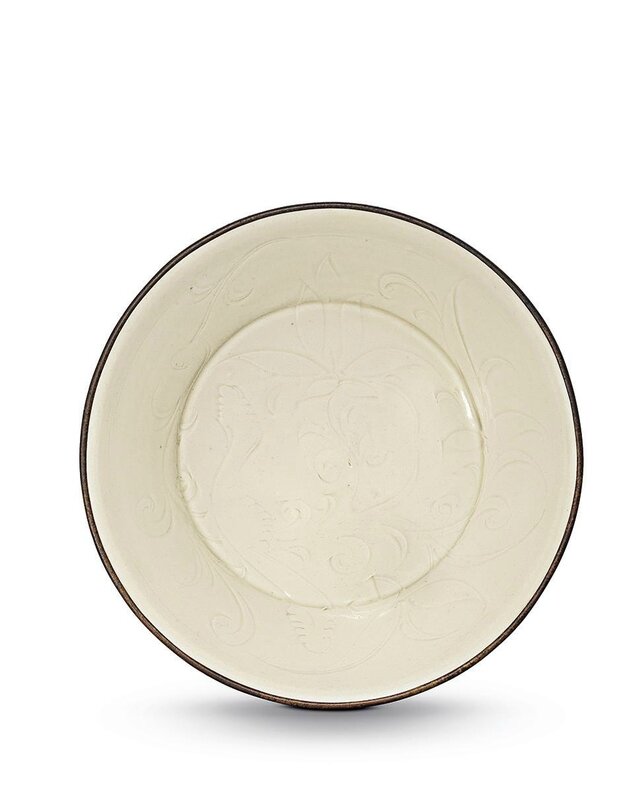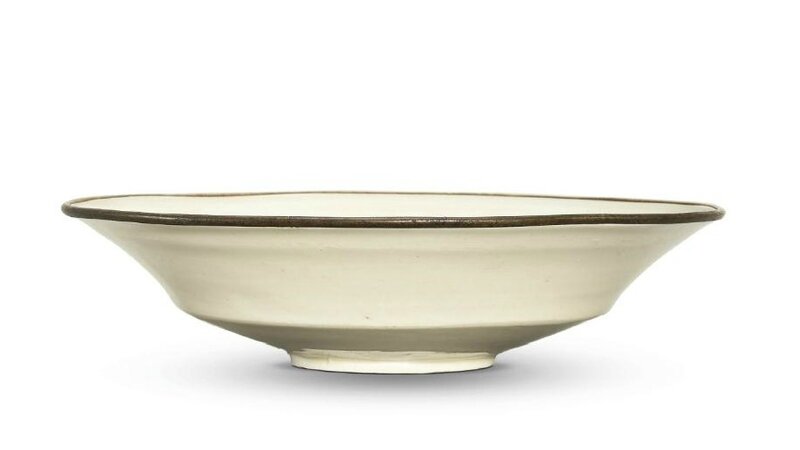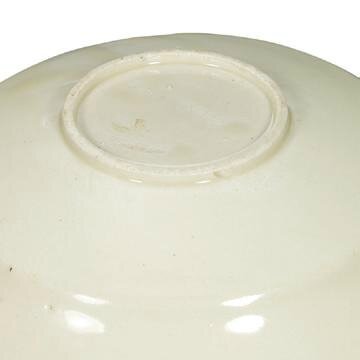A fine carved Ding 'lotus' dish, Northern Song dynasty, 11th-12th century
Lot 3112. A fine carved Ding 'lotus' dish, Northern Song dynasty, 11th-12th century. Estimate HK$1,500,000 – HK$2,000,000 (US$194,006 - $258,674). Photo Christie's Image Ltd 2016.
The dish is delicately potted with angled flaring sides supported on the short ring foot, freely carved on the interior with lotus blossoms and a serrated lotus leave. It is covered overall with a glaze of even ivory-white tone, and bound with a thin metal band on the mouth rim. 8 1/8 in. (20.7 cm.) diam., box
Provenance: Sold at Christie's London, 8 December 1986, lot 232
Sold at Sotheby's New York, 23 March 2011, lot 513
Notes: The present dish is a classic example of the fine Ding ware of the Song dynasty, ranking among the 'Five Great Wares' and greatly admired by the Imperial court. The form with an angular profile is one that provided a significant test for its potter, particularly when combined with carved decorations. In order to achieve the sharp junction between the base and sides, the thrown dish had to be placed over a wooden form and pressed down to achieve the sharp junction. This process was rendered more difficult because the decoration had already been carved into the interior of the dish and risked being squashed in the forming process. It is a measure of the potter's skill that the decoration remains crisp and distinct, and the current bowl stands as a testimony to such artistry, demonstrating a synergy of elegant form and fluid design.
An almost identical Ding dish from the Palace Museum,Beijing is illustrated in Selection of Ding Ware: The Palace Museum's Collection and Archaeological Excavation, Beijing, 2012, pp. 154-155, no. 60. Another Ding dish of very similar form and design is in the National Palace Museum, Taipei, illustrated in Tsai Meifen, Decorated Porcelains of Dingzhou: White Ding Wares from the collection of the National Palace Museum, Taipei, 2014, pp. 88-89, no. II-42. Two undecorated Ding dishes of this form were found in the M26 in the Lü family cemetery, illustrated in Yishi tongdiao: Shanxi Lantian lvshi jiazu mudi chutu wenwu (Different World Same Tones: Cultural Relics from the Shaanxi Lantian Lü Family Cemetery), Beijing, 2013, pp. 146-149, nos. 50-51. Archeologists surmised that the M26 should have belonged to Lü Yishan, son of Lü Dajun (1030-1082), see ibid, pp. 14-15.
Christie's. CLASSICAL CHINESE ART FROM THE SUI TO THE SONG DYNASTIES, 1 June 2016, Convention Hall

/https%3A%2F%2Fprofilepics.canalblog.com%2Fprofilepics%2F1%2F0%2F100183.jpg)
/https%3A%2F%2Fstorage.canalblog.com%2F03%2F02%2F119589%2F96711876_o.jpg)
/https%3A%2F%2Fstorage.canalblog.com%2F11%2F31%2F119589%2F94773502_o.jpg)
/https%3A%2F%2Fstorage.canalblog.com%2F20%2F83%2F119589%2F94772815_o.jpg)
/https%3A%2F%2Fstorage.canalblog.com%2F26%2F72%2F119589%2F75604929_o.jpg)
/https%3A%2F%2Fstorage.canalblog.com%2F59%2F60%2F119589%2F26458628_o.jpg)





/image%2F1371349%2F20240411%2Fob_4a5248_2024-nyr-22642-0913-000-a-longquan-cel.jpg)
/image%2F1371349%2F20240410%2Fob_b0ef72_2024-nyr-22642-0908-000-a-carved-ding.jpg)
/http%3A%2F%2Fstorage.canalblog.com%2F29%2F47%2F119589%2F129819867_o.jpg)
/http%3A%2F%2Fstorage.canalblog.com%2F93%2F57%2F119589%2F129818552_o.jpg)